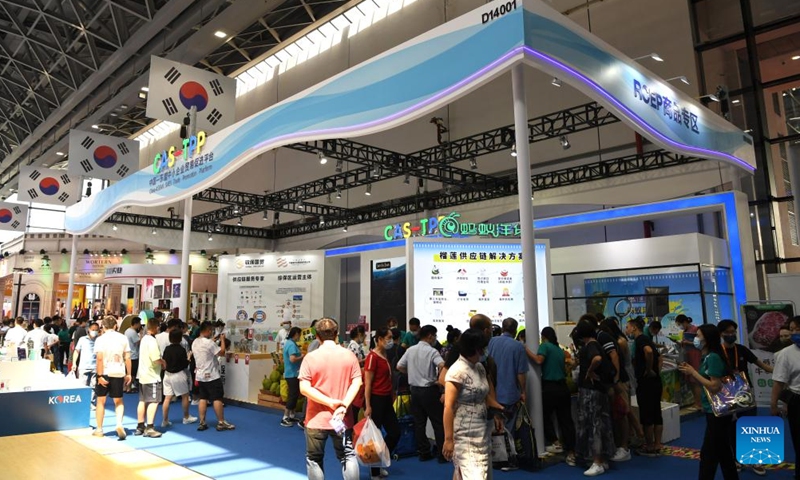
People visit the RCEP pavilions during the 19th China-ASEAN Expo in Nanning, south China's Guangxi Zhuang Autonomous Region, Sept. 18, 2022.Photo:Xinhua
Since its implementation, the RCEP has played an important role in reducing transaction costs and investment costs, and it can be made good use in the future to better promote regional economic and trade cooperation, Zhang Yuyan, director of the Institute of World Economics and Politics at the Chinese Academy of Social Sciences, said during a panel discussion at the Boao Forum for Asia in Boao, South China's Hainan Province on Wednesday.
The RCEP agreement, which entered into force at the start of 2022, groups 10 countries comprising the Association of Southeast Asian Nations (ASEAN) as well as China, Japan, South Korea, Australia and New Zealand. It aims to ultimately eliminate tariffs on over 90 percent of goods traded among its signatories over the next two decades.
The implementation of the RCEP offers valuable opportunities for Chinese firms to further expand into international markets with a reduction in import costs and a bump in export opportunities.
The trading volume between China and other 14 RCEP members stood at 12.9 trillion yuan ($1.87 trillion) last year, up 7.5 percent on a yearly basis. Trade with the parties to the agreement accounted for 30.8 percent of China’s total foreign trade last year, official data showed.
“A particularly important feature of our economic and trade relations with RCEP countries is that our trade in intermediate products accounts for a large proportion, about 67 percent,” Zhang noted, which indicated that strengthening ties in the supply chain and value chain.
Noticeably, Chinese private firms posted strong growth momentum in terms of trading with other RCEP members, according to Zhang.
Last year, the total import and export volume of Chinese private firms to other RCEP member countries increased by 17.4 percent, which was very fast, and reached 50.8 percent of the trade with the entire RCEP member countries. “It can be said that the RCEP has had a very obvious effect on expanding trade.”
In order to further boost trade in the region, Zhang suggested that the RCEP agreement could be expanded to align with other comparable trade and investment pacts like the Comprehensive and Progressive Agreement for Trans-Pacific Partnership (CPTPP).
Inclusion of more members to the RCEP could also be considered, he added.
China is engaging, communicating and negotiating with the members of the CPTPP in accordance with the free trade pact’s accession procedure, a spokesperson from China’s Ministry of Commerce said in October last year.
Global Times



